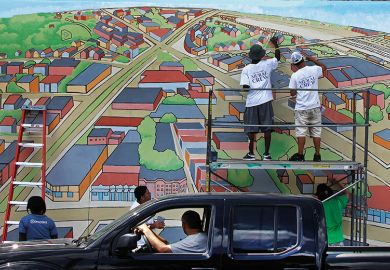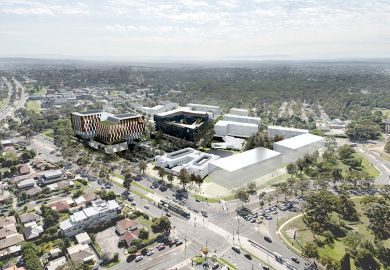The University of California, Berkeley might need to shed a third of its expected freshmen class this autumn after losing a town-gown court ruling just days before sending out the bulk of its acceptance decisions.
Berkeley, one of nation’s most selective public institutions, with an acceptance rate of about 16 per cent, had hoped to add about 9,500 new students this autumn to help meet that persistent student demand and to rebuild from temporary declines during the pandemic.
But a state judge, ruling in a long-running legal battle with city residents concerned about students living in overcrowded off-campus conditions, ordered the university to cap its total enrolment while the top-ranked institution completes a formal assessment of the impact of its housing practices.
The decision by Alameda County Superior Court Judge Brad Seligman, combined with the judge’s use of the Covid-depressed 2020-21 enrolment figures as the baseline, means that Berkeley will be able to add only about 6,450 freshmen and transfer students this autumn, the institution said.
If not quickly reversed on an appeal, the court’s position would have a devastating effect on Berkeley and the students and communities it serves, said Dan Mogulof, the assistant vice-chancellor for public affairs. “We’re bursting at the seams” in trying to meet existing student demand, he said.
But a leader of the community opposition, Phil Bokovoy, a lawyer and Berkeley alumnus, said the university had created the crisis for itself by expanding enrolment year after year without building sufficient student housing on its campus.
Berkeley expanded its total student population from about 31,000 to more than 45,000 since 2005, yet it added only 1,600 beds, Mr Bokovoy said. The result has been a crush of students living in off-campus rental units, often two to a bedroom, making housing unaffordable for many families and leaving others to endure excessive rubbish and noise.
“It’s caused a really tremendous housing crisis,” said Mr Bokovoy, head of a group called Save Berkeley’s Neighborhoods.
The dispute reflects a tension that is common in many US college towns, with residents wanting the benefits of an academic community while avoiding the usual downsides. In the case of Berkeley, Mr Bokovoy’s group is contesting the very definition of “campus”: the key point of dispute in the ruling by Judge Seligman is the Upper Hearst Project – Berkeley’s bid to rebuild an existing university parking lot and garage on the northern edge of campus into a facility containing academic space and 225 housing units for graduate students in the School of Public Policy.
“It’s ironic”, Mr Mogulof said, “that somebody who complains about us not building housing is suing us because we want to build housing.”
Mr Bokovoy explained that his group opposes Berkeley expanding outside its central core because that harms residential life and brings more property under the university’s tax-exempt status as a non-profit entity. The group instead wants the university to build more student housing in what he considers its central core.
Berkeley is doing that, Mr Mogulof said, most prominently with a 772-bed dormitory under development along the western side of its main campus, and with a more controversial 1,200-bed project planned in an existing park near dormitories on the southern side of campus.
The Berkeley city government had joined Mr Bokovoy’s group in suing over the Upper Hearst Project, but it then withdrew last year from that and another case involving the development of volleyball courts when the university agreed to pay $4.1 million (£3 million) a year for its use of city services, more than double the existing level.
Berkeley’s mayor, Jesse Arreguín, has suggested that he had little choice but to settle given the power that the university holds over the city as a state institution. Mr Bokovoy accused him of backing down to win a short-term victory that would help his longer-term political prospects.
For the university, the timing concerns are much more immediate. Berkeley has appealed against Judge Seligman’s ruling to the Supreme Court of California, but does not know when it might act. The university is, meanwhile, scheduled to announce the majority of its autumn semester admissions decisions in late March.
The university already has sent out the majority of its graduate school acceptance letters. It had expected to offer admission to about 21,000 freshmen and transfer students, to reach its target of 9,500 undergraduate acceptances. If forced to reduce that undergraduate total by a third, to meet its 2020-21 total enrolment levels, it would mean cutting those 21,000 acceptance letters by at least 5,100, the university warned.
Register to continue
Why register?
- Registration is free and only takes a moment
- Once registered, you can read 3 articles a month
- Sign up for our newsletter
Subscribe
Or subscribe for unlimited access to:
- Unlimited access to news, views, insights & reviews
- Digital editions
- Digital access to THE’s university and college rankings analysis
Already registered or a current subscriber?









